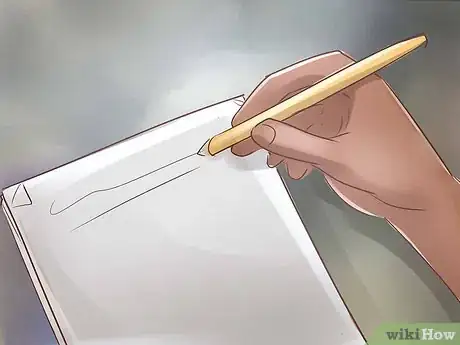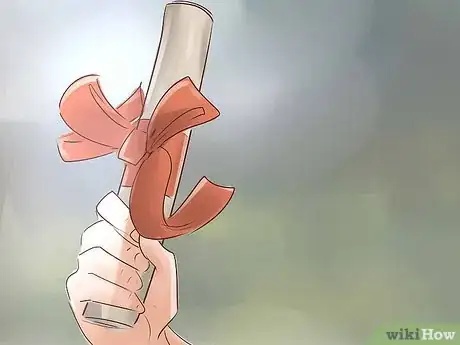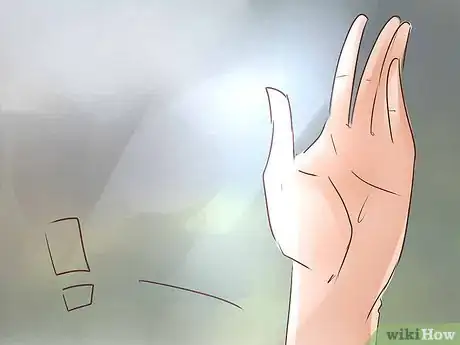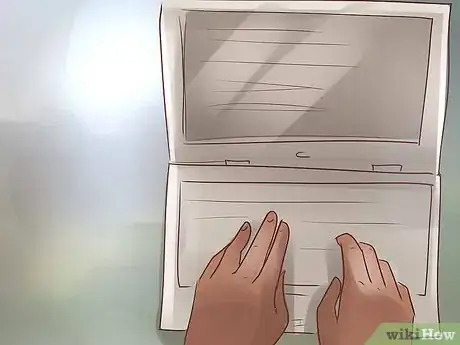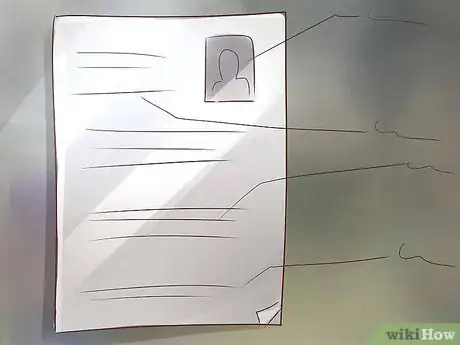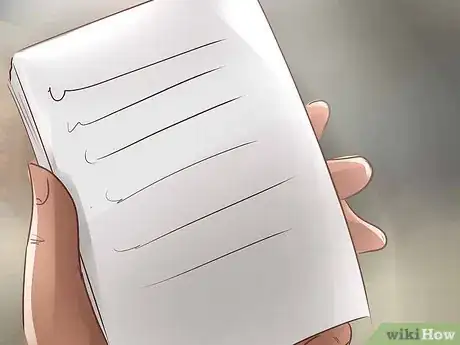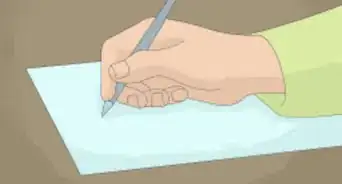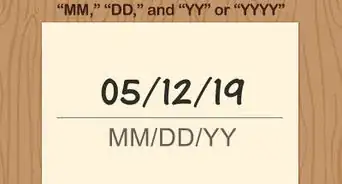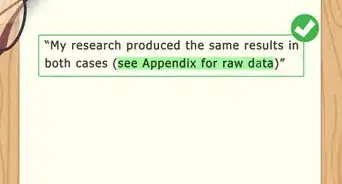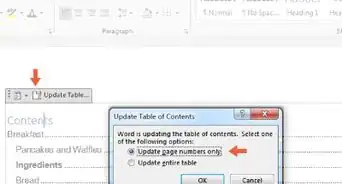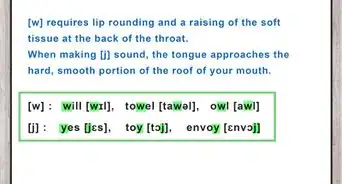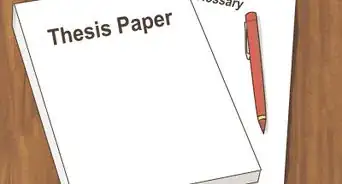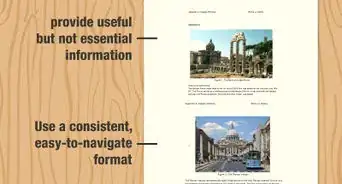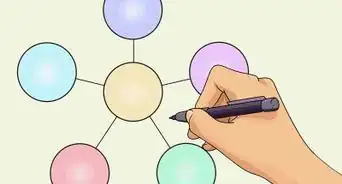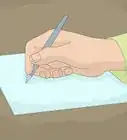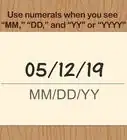wikiHow is a “wiki,” similar to Wikipedia, which means that many of our articles are co-written by multiple authors. To create this article, 12 people, some anonymous, worked to edit and improve it over time.
wikiHow marks an article as reader-approved once it receives enough positive feedback. In this case, 100% of readers who voted found the article helpful, earning it our reader-approved status.
This article has been viewed 117,196 times.
Learn more...
Technical communicators (often called technical writers) produce well-documented materials that are essential for the medical, business, technology, and scientific industries. They create instructional manuals, business communications, informational materials and other documents ranging from 1 page to thousands of pages. Technical writing is a fast-growing and competitive field.[1] You will need to find an entry level job in order to gain the experience needed to command higher salaries or become a contractor.
Steps
Getting an Education in Technical Writing
-
1Attend a college or university with a diverse writing program. More colleges and universities are offering degrees in technical communication and rhetoric. A college degree in this field will be an asset when you apply for a job as a technical writer.
- A college degree is not a formal requirement for many technical writing jobs, but most people who work in technical writing have a college degree. It will be easier to get a job if you have specific training in the field.
- If your college doesn't have a technical writing program, you may be able to get a degree in creative writing or English with an emphasis in technical writing and communication.
-
2Choose your technical writing track. People who get degrees in technical writing and communication usually choose between technical, medical and scientific tracks for their degrees. Choose the track that seems more interesting to you, so that you can learn the style, terminology and best practices of that specific trade.
- If you are not enrolled in a technical writing and communication degree, consider a double major in writing/English and another subject you are interested in, such as computer science, biology, graphic design, pre-med, engineering, law or mechanics. This is the technical knowledge needed to work as a technical writer.
- If enrolling in a double major is not an option, you can always teach yourself the language used in your field of interest. Visit your university's library and read the journals and manuals used in the field you're interested in. Read extensively online in the area of your interest. In order to be considered for a job as a technical writer, you'll need to know the language used in the particular field for which you're writing.
Advertisement -
3Enroll in a technical writing course. Technical writing courses are offered at many universities, community colleges, or at the Society for Technical Communication, STC.org. Make sure that the course provides you with all the skills needed to produce a technical document, a certification and some kind of specialization.
- A technical writing course/certification should teach the following skills: analyzing information/research, interviewing, documentation, basic computer/graphic design, presentation, testing, editing, publishing and revising.
- There are many online classes in technical writing, and even a few certificate and degree programs. If you're planning on getting an entry level job as a technical writer, these courses can help boost your resume and sharpen your online skills at the same time.
-
4Hone your computer skills. The software industry is a major presence in the technical writing field, and employers are actively seeking writers who are familiar with the latest computer programs and applications.
- Particular programs that all job applicants should make sure to know include: Microsoft Office Suite, Adobe FrameMaker, Adobe Creative Suite, Madcap Flare, Author-it, Microsoft Visio, and Lotus Notes.
- Opportunities to learn new computer skills are often available for free. Take advantage of online learning opportunities, and document every new skill you learn.
-
5Earn post-degree certification in a new subject. This will give you added relevance in the technical writing market, allowing you to expand your job search and land a job more easily.
- Being active in the technical writing field means ongoing training in the area of your specialty. Use online courses, often available for free, to continue to develop knowledge in your field of interest.
- Employers are often attracted to job applicants who have a demonstrated enthusiasm for learning. In the competitive marketplace for technical writing jobs, having additional certifications will help a potential employer take notice of your resume.
Earning Experience In Technical Writing
-
1Join the Society for Technical Communication (STC). This is the largest professional organization for technical writers. It maintains a large job bank and career center. Joining this group is a great way to learn about job openings and trends in the technical writing field.[2]
- Read the "Intercom" and "Technical Communication Journal" to get a background on what is currently being published in the technical writing field.
- The "STC Notebook" is a public blog maintained by the STC. Subscribe to its RSS feed for updates.
-
2Volunteer to do technical writing jobs. You will need samples of professional technical writing to create a portfolio. The following are ways you can volunteer your time in order to produce these samples:
- Contact your local STC chapter. Ask if they have volunteer projects available to help you gain experience. Many times, you'll be able to find people who are happy to help a new writer gain the experience they need.
- Call local businesses and ask them if they need help creating an instructional manual or technical document. Most businesses will jump at the chance to have someone with a writing education do a manual for free. Make sure to specify the hours you are willing to work, your time line and what you can produce.
- Work on an open source project. A quick internet search for open source projects will connect you to these projects all over the world. In addition, every summer Google hosts a "Summer of Code" project that pairs students with mentors to contribute to its many open source projects.[3] Volunteer and track your hours spent improving their instructional or technical text.
- Draw from your own learning experience to write something original. If you've recently done an open source project, for example, make a brochure explaining how to create open source material, as if you were writing for a client. If you're interested in writing particular kinds of technical material, start writing for yourself. An employer is more likely to see your potential from your work than from anything else you could offer.
- Alternatively, rework an existing piece of technical writing that you think you could make better. Take a badly designed brochure, and rework it so that it's more effective. Document both "before" and "after" for your portfolio.
-
3Become a freelance writer. A freelance writer is someone who works as an independent contractor to a business or other professional organization. It's possible to make a living as a freelance writer, but many people do freelance writing to supplement their income while working other jobs, or when they are students. Freelance writing is a good way to gain professional work experience as a technical writer.
- Online sites such as Upwork, Freelancer, and Squidoo serve to match freelance writers with potential employers for a percentage of the writer's fee.[4] Others, such as Craiglist, are free to public use.
- Freelance writing will allow you to try out a number of different styles of writing to find the areas that most interest you.
- Developing an online profile as a freelance writer can help you be more attractive to a prospective employer.
-
4Create a portfolio. Make sure your samples are impeccable. Proofread your work carefully to ensure high quality throughout. You should include attractive, well designed digital and physical samples of your work in your portfolio.
- Include 10 to 15 diverse examples of technical writing experience. For example, include video tutorials, journal articles, quick user guides, help files, an excerpt from a business manual and anything else that touts your experience. Write a brief introduction explaining the work you've done, its purpose and any tools you used.
- Post your digital portfolio on a website. There are many sites that offer free hosting. Make sure your portfolio is well-designed and easily accessible.
- Include any relevant educational experience at the end of your portfolio. Although this will be in your resume, it is important to highlight any honors, essay publications and high marks you received while training as a technical writer.
-
5Design your resume. Format it to highlight your experience, including volunteer work, and education. Remember that a well-designed resume is built on strong visual imagery as well as well-chosen words.
- You should change your resume for every job application. Highlight the skills that apply to the job posting and industry, rather than producing a general resume for every job.
- Look at sample resumes written by other technical writers for ideas on how to structure your own resume.
Searching For Your First Job
-
1Find a mentor. Starting out in the field can be daunting, so contact your college's alumni department or local chapter of the STC to see if you can meet with an experienced technical writer. This mentor can give you advice and tell you what markets or employers are looking for entry level staff.
- The STC also maintains an active mentor board. If you're interested in find a mentor to help you find an entry level job in technical writing, complete a profile that can be posted on this board.
- A mentor help you by sharing experiences, advice and training. If you're uncertain what particular field of technical writing might suit you, a mentor can help you understand the different aspects that may affect your choice. A mentor can also help you access new training and professional development.
-
2Consider moving to a technical hub. There are more entry level jobs in cities such as Toronto, Ottawa, Vancouver, New York City, San Francisco, Los Angeles, D.C., Boston, Houston, San Diego, Seattle, Portland, Atlanta and Dallas than in smaller cities. Look at the STC website to find the best cities for technical writing jobs.
- More and more technical writing jobs are available online as well. If you don't live in a larger city, you may want to find an online entry level technical job position.
- Depending on the particular track of technical writing you plan to pursue, consider the other factors involved in your field to decide where you should live. For example, if writing for research in healthcare is your goal, look for positions in cities that also house major medical research centers. If you're interested in pursuing writing for the aerospace engineering field, look for jobs in cities that are major hubs for Boeing, Lockheed-Martin, etc.
- Look online using job search engines. Reading the listings is a good way to become familiar with the job market in different cities.
-
3Make a contact list. List all major companies that are hiring technical writers in any position. For this list, you'll want to be as inclusive as possible.
- Make a spreadsheet that lists the company, industry, contact information and any special notes or qualifications.
- You should be able to alter your spreadsheet as you acquire new information. Delete or add new entries as need be.
- Call or email companies directly. Ask them to consider you for any future entry level positions and keep your resume and portfolio on file. To cover your bases well, contact between 50 and 100 companies.
-
4Network at seminars, job fairs and major technical events. Meeting contacts in the industry and foster relationships. They may be able to give you hints about possible entry level openings.
- Make sure you have an attractive and professional-looking business card to share with others.
- Keep your resume up-to-date so that you can share with professional contacts you meet through networking.

